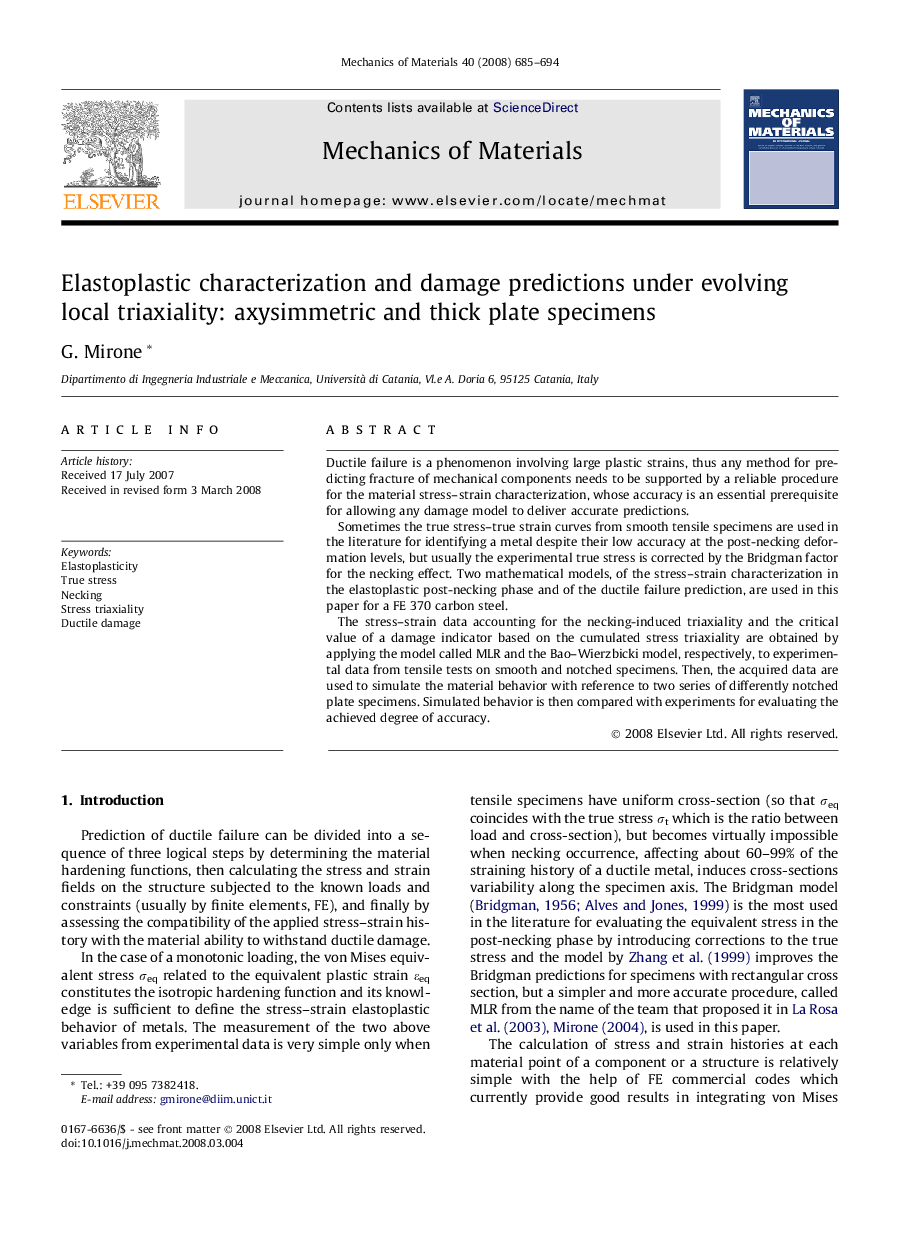| Article ID | Journal | Published Year | Pages | File Type |
|---|---|---|---|---|
| 800291 | Mechanics of Materials | 2008 | 10 Pages |
Ductile failure is a phenomenon involving large plastic strains, thus any method for predicting fracture of mechanical components needs to be supported by a reliable procedure for the material stress–strain characterization, whose accuracy is an essential prerequisite for allowing any damage model to deliver accurate predictions.Sometimes the true stress–true strain curves from smooth tensile specimens are used in the literature for identifying a metal despite their low accuracy at the post-necking deformation levels, but usually the experimental true stress is corrected by the Bridgman factor for the necking effect. Two mathematical models, of the stress–strain characterization in the elastoplastic post-necking phase and of the ductile failure prediction, are used in this paper for a FE 370 carbon steel.The stress–strain data accounting for the necking-induced triaxiality and the critical value of a damage indicator based on the cumulated stress triaxiality are obtained by applying the model called MLR and the Bao–Wierzbicki model, respectively, to experimental data from tensile tests on smooth and notched specimens. Then, the acquired data are used to simulate the material behavior with reference to two series of differently notched plate specimens. Simulated behavior is then compared with experiments for evaluating the achieved degree of accuracy.
